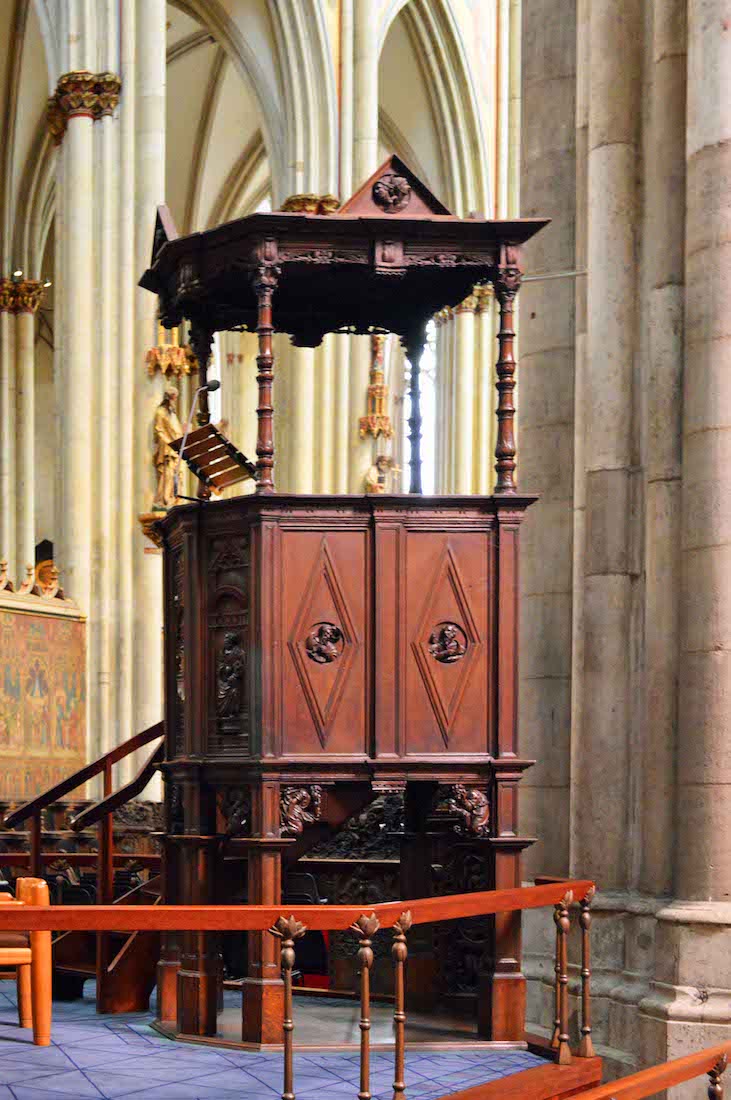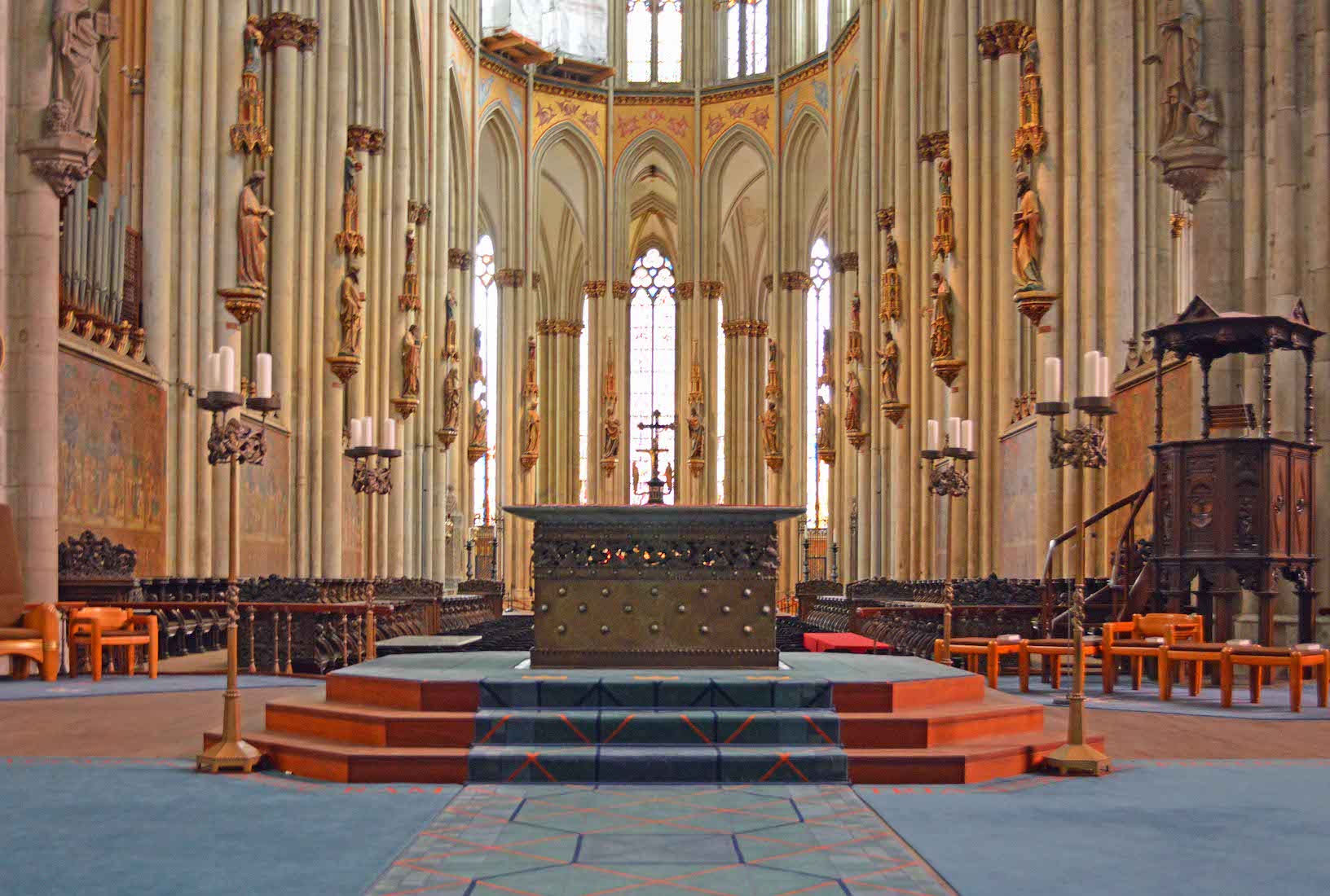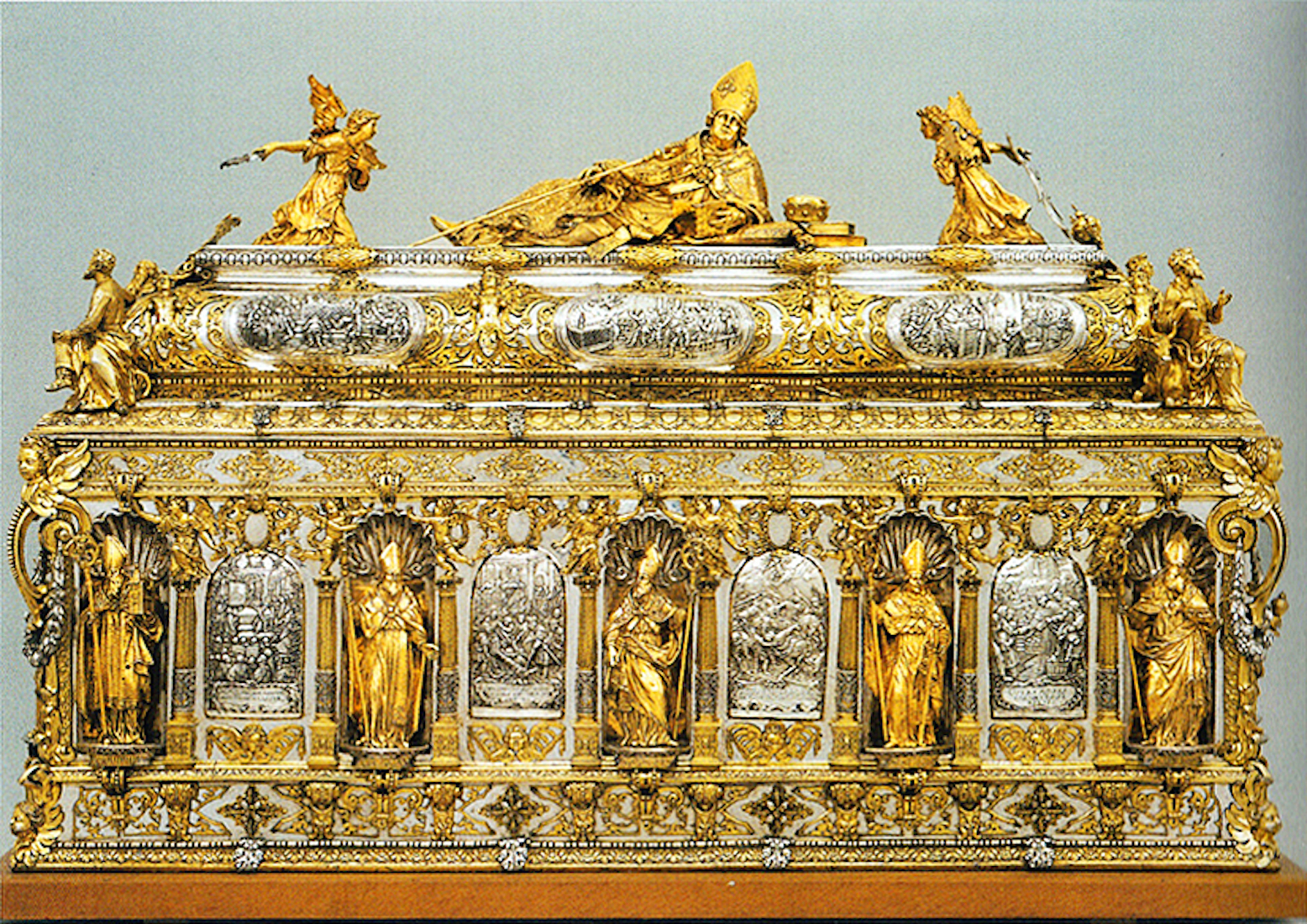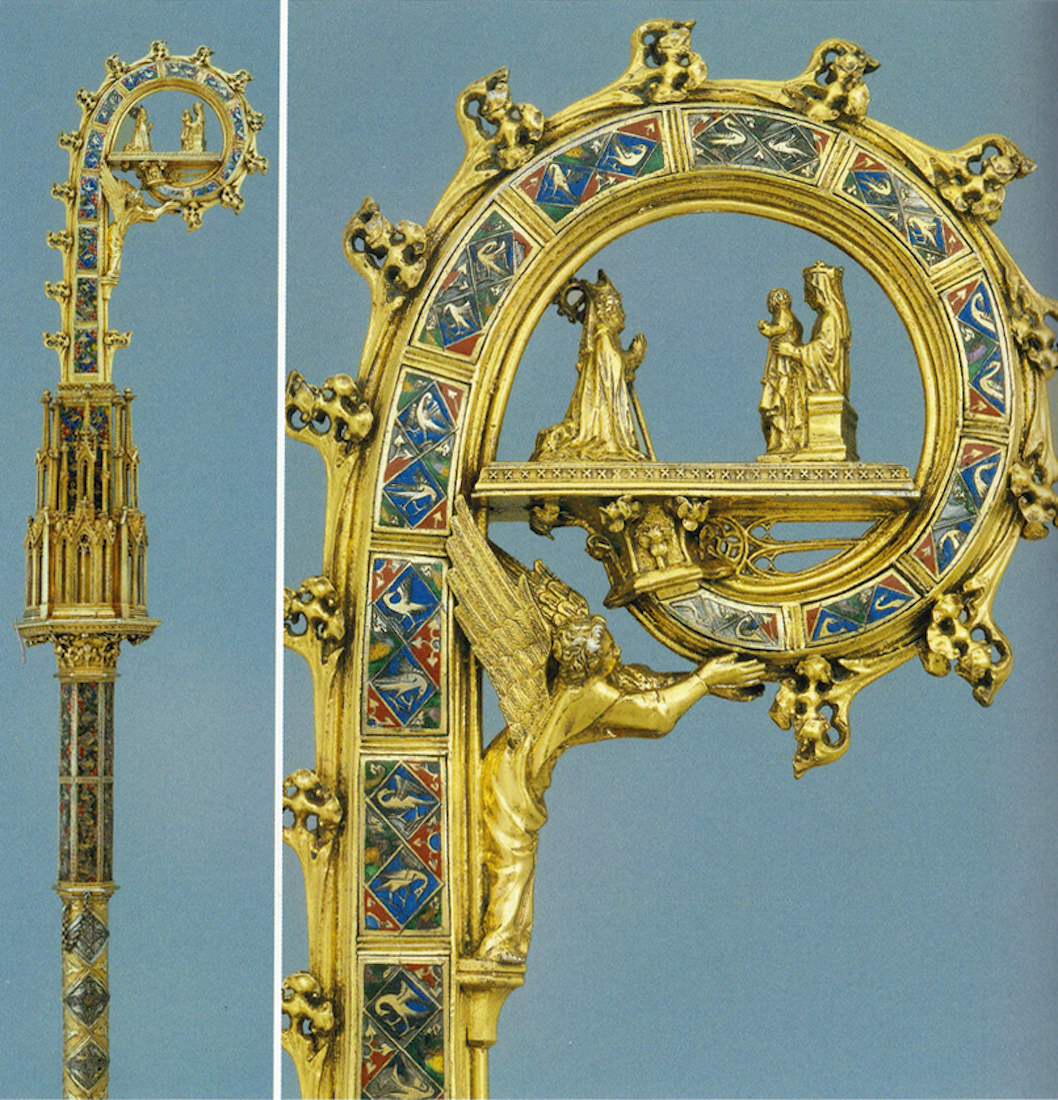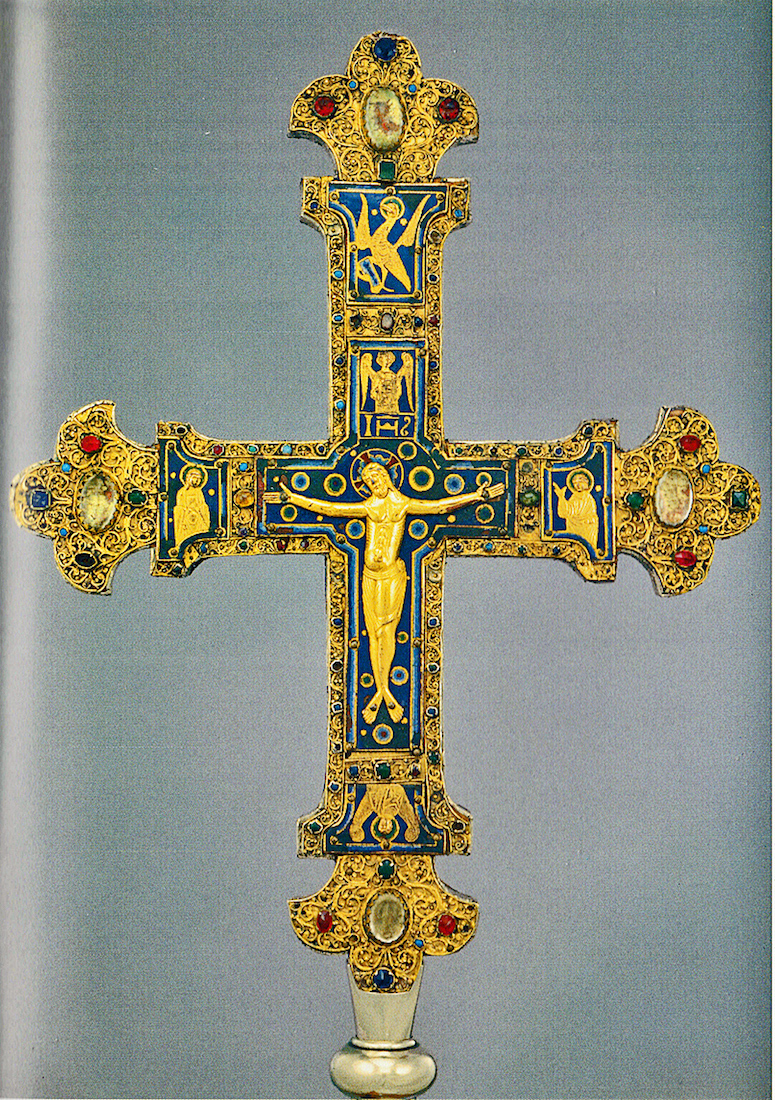122. INNER CHOIR
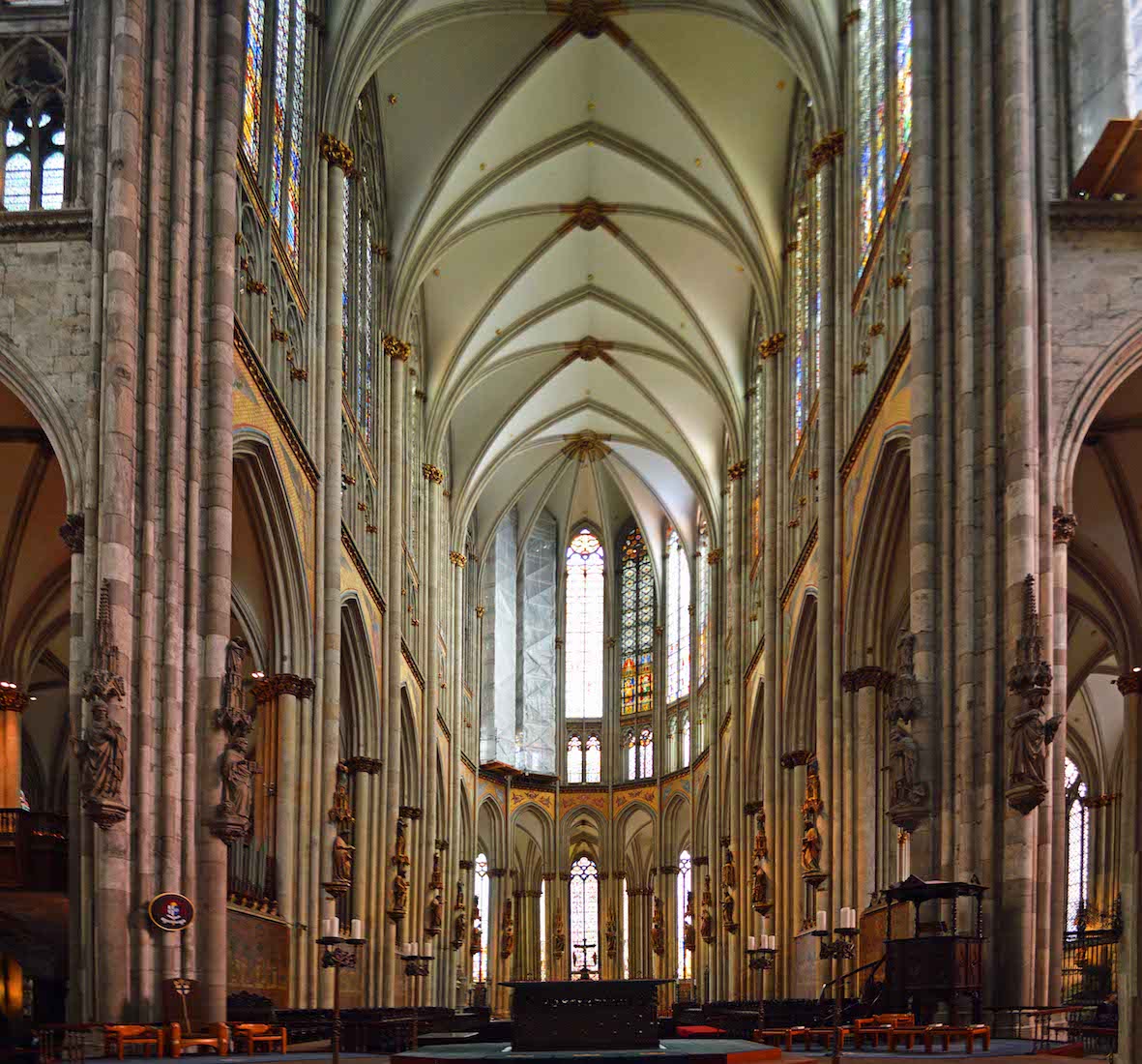
Looking East past the nave altar, we view the focal area of the Cathedral.
123. NAVE ALTAR
The altar in the crossing [33], the floor candelabras, the communion railing and the lectern were made in cast bronze by Elmar Hillebrand between 1960 and 1971. The mosaic pavement remains intact under the altar podium. This completes our tour of the Cathedral, before taking a brief look at the Treasury.
124. TREASURY
We exit the Cathedral through the Hubertus Chapel, and look briefly at the Treasury. Here we see the Shrine of St Engelbert, made in 1633. Archbishop Engelbert is shown reclining on top, and the figures around the sides include Christ, the Magi and various archbishop saints. [Cathedral photo]
125. GOTHIC CROZIER
The Gothic Crozier was made in Cologne in c. 1320. In the middle of the crook, supported by an angel, an archbishop kneels before the Mother of God. The episcopal staff is every bishop’s symbol of office. [Cathedral photo]
126. PROCESSIONAL CROSS
This processional cross was created in Cologne c. 1220. The deep blue enamel plate in the centre bears the gilded relief of the crucified figure on its accentuated central cross. [Cathedral photo] There are many more treasures in the Treasury! This completes our tour.
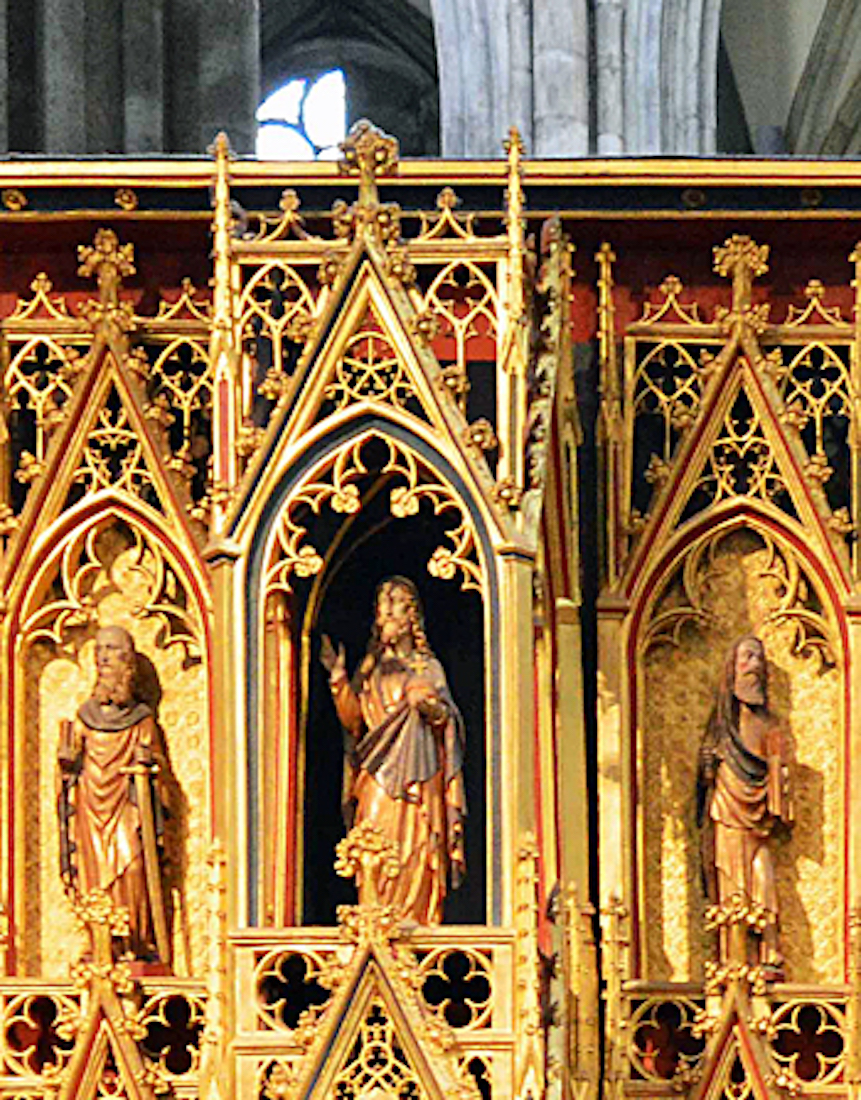
CONCLUSION
Cologne has an immense and glorious Cathedral. I hope you have enjoyed visiting it with me.
I am happy to receive constructive comments or corrections concerning this website. The best websites are the ones which have no errors! I am grateful to my wife Margie who came to Cologne with me, and who has proof-read these pages.
Almost all the photos used here are mine: the few exceptions are acknowledged in the text. In particular, the several Treasury photos have come from the Colour Guide ‘Cologne Cathedral’ by Barbara Schock-Werner. As usual with these sites the text is largely dependent on other sources. In this case Wikipedia, and more particularly the excellent reference ‘Cologne Cathedral’ by Arnold Wolff. This is truly a handbook for studying this cathedral.
The Cathedral has a website:
The photographs which appear on this site can also be found in higher resolution at:
https://www.flickr.com/photos/paulscottinfo/albums/
Site created 1 / 2015 ; reformatted 01 / 2021
Paul Scott

